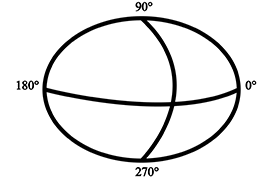Aims: To analyze changes in surgically induced corneal astigmatism and artificial intraocular lens (IOL) stability over time following cataract surgery. To compare the interchangeability of measurements between an automatic keratorefractometer (AKRM) and a biometer.
Material and methods: In this prospective observational study, the above-mentioned parameters were collected from 25 eyes (25 subjects) on the first day, first week, first and third month after uncomplicated cataract surgery. We used IOL-induced astigmatism (difference between refractometry and keratometry) as an indirect indicator of IOL stability change. We used the Blant-Altman method to analyze consistency between devices.
Results: At the above time points, surgically induced astigmatism (SIA) decreased as follows: 0.65 D; 0.62 D; 0.60 D and 0.41 D (in the first day, week, month and third month respectively). Astigmatism induced by changes of the position of the IOL varied as follows: 0.88 D; 0.59 D; 0.44 D and 0.49 D. Changes in both parameters were statistically significant (p < 0.05). Neither the measurements of the astigmatism value nor the astigmatism angle showed a statistically significant difference between the devices (p > 0.05).
Conclusion: Both surgically induced astigmatism and astigmatism induced by IOL decreased over time, in which both changes were statistically significant. The decrease in SIA was most pronounced between the first and third month after surgery. For IOL-induced astigmatism, the greatest decrease was within the first month after surgery. The differences in measurement between the biometer and AKRM were statistically insignificant, but the clinical interchangeability between the given methods is questionable, especially with regard to measurement of the astigmatism angle.

